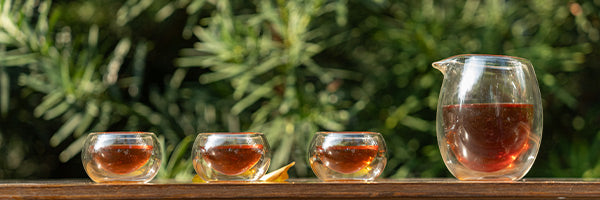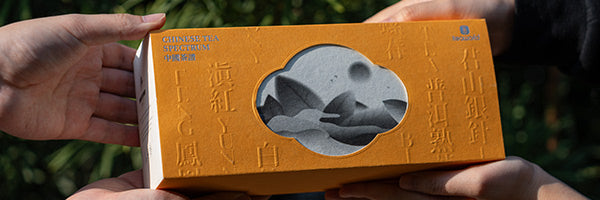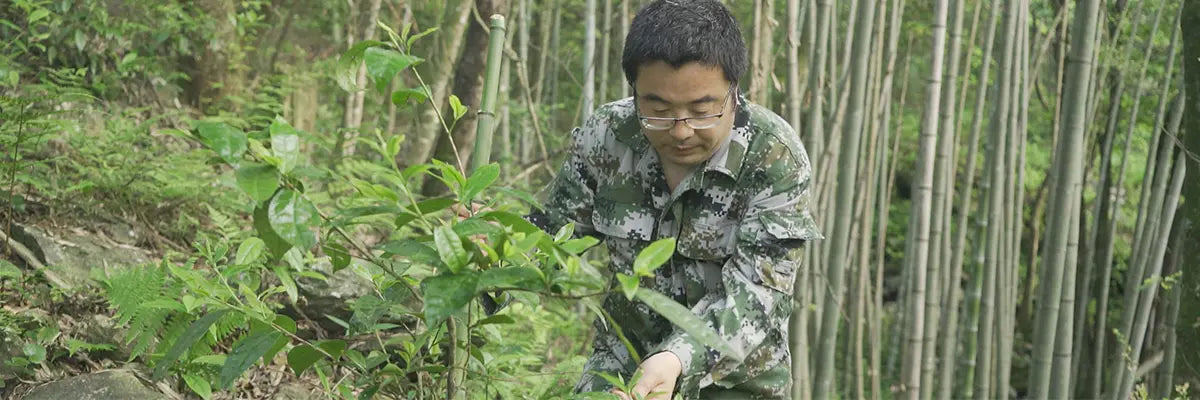Знаете ли вы о чае Улун и зеленом чае? Знаете ли вы об их различиях?
На самом деле, эти два типа чая имеют некоторые сходства, но они также имеют различия в аромате, вкусе, внешнем виде, цвете и процессах производства. Изучение этих аспектов может помочь вам лучше и глубже понять чай Улун и зеленый чай , что позволит вам выбрать лучший листовой чай, который соответствует вашим предпочтениям.
О чае улун и зеленом чае
1.Что такое чай улун?

Чай улун — это отличительная категория среди шести основных видов китайского чая. Этот чай уникален, поскольку является полуферментированным чаем. Чай улун стоит особняком, не попадая ни в категорию зеленого чая, ни в категорию черного чая. Он обладает характеристиками как зеленого, так и черного чая. Чай улун широко любим во всем мире и признан в Японии как «чай красоты» и «чай здоровья».
Типичные сорта чая Улун включают Те Гуаньинь из Аньси, Хуанцзингуй, Юнчунь Фошоу, Уи Да Хун Пао , Уи Шуйсянь, Фэнхуан Даньцун , Дундин Улун, Али Шань Улун и т. д.
2.Что такое зеленый чай?

Зеленый чай — это неферментированный чай, и он называется «зеленым чаем», потому что его готовые сухие листья, цвет заваренного чая и цвет нижней части листа в основном зеленые. Зеленый чай — старейший вид чая в истории, история которого насчитывает более трех тысяч лет.
Зеленый чай имеет самый высокий объем продаж среди шести основных видов чая, с годовым производством около 100 000 тонн, занимая первое место среди всех видов чая, производимых в Китае. Однако его доля на мировом рынке намного ниже, чем у черного чая.
Семьдесят процентов мирового зеленого чая поступает из Китая. Типичные методы обработки зеленого чая включают фиксацию, скручивание и сушку, которые классифицируют его как пропаренный зеленый чай, обжаренный на сковороде зеленый чай, жареный зеленый чай и высушенный на солнце зеленый чай.
Различия между чаем улун и зеленым чаем
1.Аромат и вкус
Благодаря процессу ферментации листовой чай Улун значительно снижает горький вкус чайных листьев. Это приводит к уникальному вкусовому профилю чая Улун, сочетающему в себе насыщенность черного чая со свежестью зеленого чая. Чай Улун воспринимается как имеющий чистый и освежающий аромат, с богатым и мягким вкусом, стойкой сладостью и стойким ароматом. Примечательно, что вторая и третья заварки чая Улун часто являются самыми ароматными, а известные сорта, такие как Аньси Тегуаньинь, известны тем, что имеют «более семи заварок стойкого аромата».
Для сравнения, зеленый чай, не подвергавшийся ферментации, может не сравниться с чаем Улун по выдержке при многократном заваривании и может не обладать таким же интенсивным и стойким ароматом. Однако зеленый чай имеет свои отличительные характеристики, в основном характеризующиеся его «свежестью». Качество вкуса зеленого чая в основном определяется процессом фиксации. В зависимости от процесса фиксации зеленый чай можно разделить на пропаренный зеленый чай, прожаренный на сковороде зеленый чай, жареный зеленый чай и высушенный на солнце зеленый чай. Пропаренный зеленый чай имеет сильный и чистый аромат со сладким вкусом; жареный зеленый чай имеет чистый аромат и мягкий вкус; высушенный на солнце зеленый чай имеет более сильный аромат и сильную терпкость; прожаренный на сковороде зеленый чай имеет немного более сильный аромат и вкус.
Уникальный и прекрасный вкус и аромат листового чая Улун и листового зеленого чая делают их прекрасным выбором для подарков на праздники. Не стесняйтесь изучать подарочные наборы чая, доступные на iTeaworld, предлагая полезные и вкусные подарки для друзей и семьи.
2.Внешний вид
Рассыпной чай улун можно грубо классифицировать по его внешним характеристикам: скрученные чайные полоски с пухлыми и круглыми узелками, плотно скрученные с нежными и ровными узелками и скрученные с круглыми и крепкими узелками. В целом, чай улун производит общее впечатление скрученного, пухлого и округлого, без четких краев.
По внешнему виду зеленый чай можно условно разделить на различные формы: длинные полоски, цилиндрические, плоские, игольчатые и спиральные.
3.Цвет

Цвет в основном делится на три аспекта: сухие листья, цвет заваренного чая и нижняя часть листа. Сухие листья чая улун имеют более сложный цвет по сравнению с зеленым чаем из-за ферментации, в результате чего чайные листья имеют более темный цвет. Наиболее отличительной чертой являются «зеленые листья с красными краями», такие как желто-зеленые и глянцевые, песчано-зеленые и блестящие, зелено-коричневые и свежие. Что касается цвета заваренного чая, чай улун обычно кажется золотисто-желтым и ярко-оранжевым.
Основной характеристикой листового зеленого чая является то, что сухие листья зеленые, заваренный чай имеет зеленый цвет, а нижняя часть листа зеленая, по сути, все листья зеленые без примесей других цветов.
4.Производственный процесс

Чай улун — это полуферментированный чай с ключевыми этапами обработки, включая завяливание, «создание зеленого», фиксацию, скручивание и сушку. Самым важным этапом является процесс «создание зеленого», уникальный для чая улун, определяющий его особый аромат и вкус.
Основные этапы обработки зеленого чая включают фиксацию, скручивание и сушку, при этом фиксация и сушка являются решающими факторами, определяющими различия в качестве зеленого чая.
Из методов обработки видно, что оба вида чая имеют общие этапы, такие как фиксация, скручивание и сушка. Ключевое отличие заключается в том, что у чая улун есть процессы завяливания и «создания зеленого», которые включают определенную степень ферментации чайных листьев. Зеленый чай, с другой стороны, подвергается минимальной ферментации в течение всего периода производства.
5. Температура воды для заваривания

Различить зеленый чай и улун можно также по температуре воды, в которой они завариваются. Улун имеет сильную устойчивость к завариванию и подходит для заваривания в воде, близкой к кипящей при температуре около 100 градусов по Цельсию.
Большинство зеленых чаев нежны на вкус и требуют для заваривания воды температурой около 90 градусов по Цельсию. Использование воды слишком высокой температуры может ошпарить чайные листья, что повлияет на вкус и аромат чайного настоя.
Узнав так много интересных подробностей о чае улун и зеленом чае, рекомендуется попробовать некоторые классические сорта обоих, чтобы лучше оценить различия и их уникальные качества. Не стесняйтесь покупать листовой чай iTeaworld, чтобы попробовать. iTeaworld предлагает серию пробников чая , что позволяет вам легко найти чай улун и зеленый чай, которые соответствуют вашим предпочтениям.
Улун и зеленый чай имеют свои особенности. Подводя итог, зеленый чай сохраняет оригинальный вкус чайных листьев, в результате чего после заваривания получается ароматный и освежающий чайный настой. С другой стороны, улун обладает длительным и возвышенным ароматом с богатым и мягким вкусом. Выбор между ними зависит от ваших предпочтений в характеристиках чая.












































































